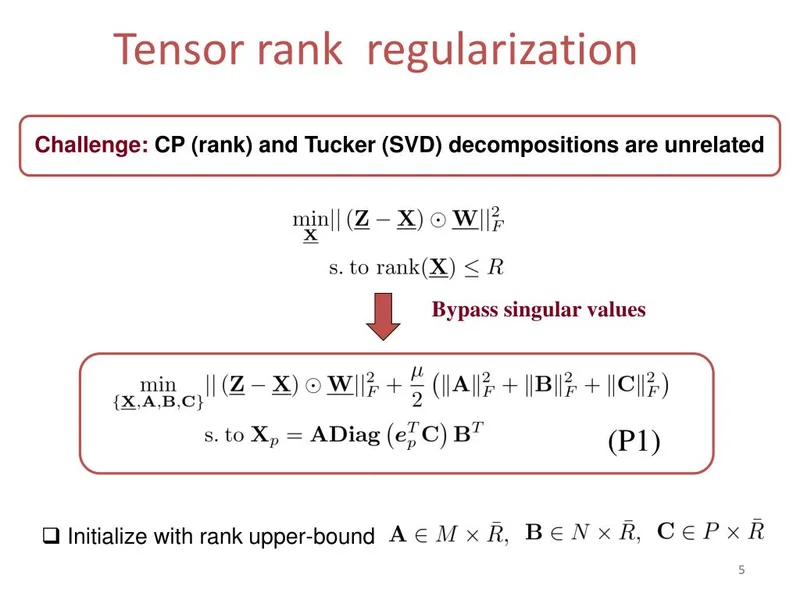Tensor: What Is It, Tensor AI, and Why Should I Care?
Optical Tensor Breakthrough: AI's Energy Crisis Solved, or Just Another Lab Gimmick?
Alright, so I'm seeing headlines screaming about "optical tensors" and how they're gonna magically fix AI's energy problem. Give me a break. We've heard this song and dance before.
The "Speed of Light" Hype Train
These Aalto University eggheads are claiming they can do tensor operations – the freaking backbone of AI – with a single pass of light. No more power-hungry GPUs, no more data centers sucking up electricity like a small country. Supposedly, this optical method encodes data into light waves and bam, simultaneous calculations happen without breaking a sweat.
They're saying this could cut energy use by, like, a hundredfold. Okay, sure. And I'm gonna win the lottery tomorrow.
"Our method performs the same kinds of operations that today’s GPUs handle, like convolutions and attention layers, but does them all at the speed of light," said study author Yufeng Zhang, Aalto University. "Instead of relying on electronic circuits, we use the physical properties of light to perform many computations simultaneously.”
Translation: "We built a fancy prototype in a lab, and it might work in the real world if we can ever scale it up and stop it from exploding."
The claim is that it's all "passive," meaning no transistors or amplifiers needed mid-computation. Which sounds great, offcourse, but what about the initial light source? How much juice that thing gonna guzzle? And what about cooling? 'Cause last I checked, even lasers generate heat.

From Lab to Reality: A Huge Leap of Faith
They envision sticking this tech into photonic integrated circuits, making it compatible with silicon photonics. Prototypes used diffractive optics and metasurfaces to manipulate light, supposedly achieving accurate tensor operations with low error rates. Single-Shot Tensor Computing at Light Speed
Hold on. Metasurfaces? That's code for "expensive and difficult to manufacture." And "low error rates" in a lab setting are about as meaningful as "safe" on a pack of cigarettes.
The real kicker is integrating this optical nonsense with existing electronic systems. You're talking about hybrid architectures, which means more complexity, more points of failure, and, surprise, probably more energy consumption overall.
And what about noise? Light is finicky. Dust, vibrations, stray reflections – all that crap can screw with the signal and throw off the calculations. Are we really supposed to believe they've solved all that?
The "Democratization of AI" BS
Oh, and here's my favorite part: the claim that this will "democratize AI" by lowering barriers to entry for smaller players. Because, you know, every struggling startup has a spare million lying around to invest in cutting-edge optical computing hardware.
Let's be real: This is about big corporations trying to squeeze more profit out of their AI empires. They don't give a damn about democratizing anything.
Maybe I'm being too harsh. Maybe this optical tensor thing really is the future. But color me skeptical. I've seen too many "revolutionary" technologies crash and burn to get my hopes up. Then again, maybe I'm the crazy one here.
So, What's the Catch?
This is all smoke and mirrors until I see a real-world implementation that doesn't cost a fortune and doesn't require a team of PhDs to operate. Until then, I'm calling BS.
-

Warren Buffett's OXY Stock Play: The Latest Drama, Buffett's Angle, and Why You Shouldn't Believe the Hype
Solet'sgetthisstraight.Occide...
-

The Great Up-Leveling: What's Happening Now and How We Step Up
Haveyoueverfeltlikeyou'redri...
-

The Business of Plasma Donation: How the Process Works and Who the Key Players Are
Theterm"plasma"suffersfromas...
-

NJ's ANCHOR Program: A Blueprint for Tax Relief, Your 2024 Payment, and What Comes Next
NewJersey'sANCHORProgramIsn't...
-

The Future of Auto Parts: How to Find Any Part Instantly and What Comes Next
Walkintoany`autoparts`store—a...
- Search
- Recently Published
-
- BMNR Stock: The Ethereum Bet and Its Visionary Future
- Shamelessness: What Drives It?
- Zcash's Unexpected Rise: What's Fueling the Surge and What's Next?
- Cross-Border Evolution: AI, Data, and the New Global Value – What Reddit is Saying
- SRL Stock: Meaning, Fall Protection, and Score
- ETH6900: Buterin's Meme Coin Dump and the Aftermath
- Shameless Auction and Camp Artifacts: Seriously?
- Tensor: What Is It, Tensor AI, and Why Should I Care?
- Ethereum's Price Rollercoaster: What's Driving the Bitcoin Frenzy and Crypto Hype?
- GWEC and SSI Partner Up: What's the Deal?
- Tag list
-
- carbon trading (2)
- Blockchain (11)
- Decentralization (5)
- Smart Contracts (4)
- Cryptocurrency (26)
- DeFi (5)
- Bitcoin (29)
- Trump (5)
- Ethereum (8)
- Pudgy Penguins (5)
- NFT (5)
- Solana (5)
- cryptocurrency (6)
- XRP (3)
- Airdrop (3)
- MicroStrategy (3)
- Stablecoin (3)
- Digital Assets (3)
- PENGU (3)
- Plasma (5)
- Zcash (6)
- Aster (4)
- investment advisor (4)
- crypto exchange binance (3)
- SX Network (3)
